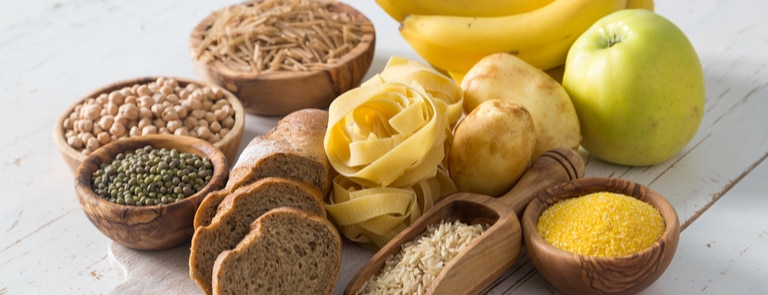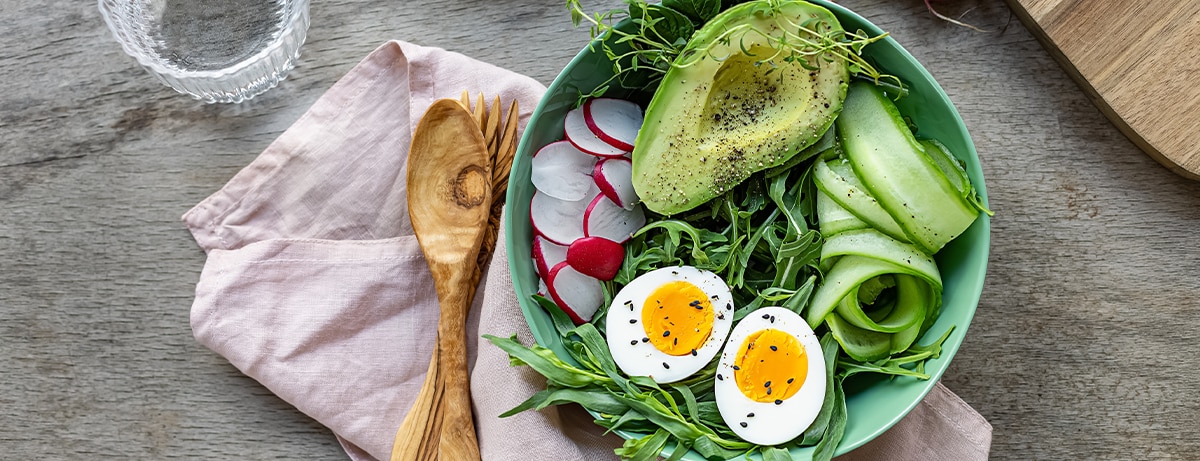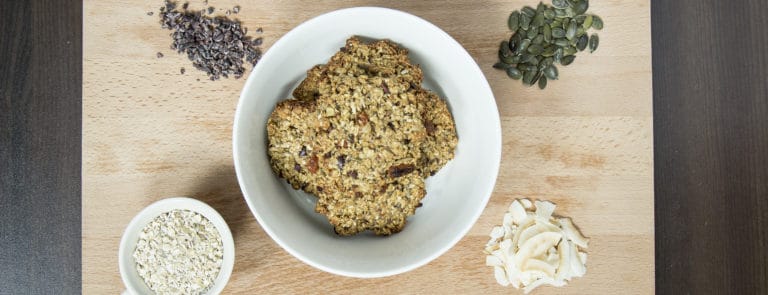10% off £35
What is a low fibre diet?

Fibre is found in fruits, vegetable sand grains and is not digested by your body.1
Eating a low fibre diet, restricted or low-residue diet as it’s sometimes known puts limitations on these foods.
This restricts the amount of undigested material passing through your large intestine is less, which results in a less bulky stool.
You may be recommended a low fibre diet for many reasons, which we’ll go into later in this article.
We’ll also look at why people follow low fibre diets, whether low fibre diets are safe and foods you can and can’t eat when following one.
What is fibre?
Dietary fibre is the indigestible part of plants that helps maintain the structure of the plant.
Due to its indigestibility, fibre is important for the normal functioning of and in disorders of the large intestine or colon.
Many foods which contain fibre can benefit you and help add more substance to your diet, but some of the harsher, rougher fibres can cause you discomfort and add to any existing digestive difficulties you already be experiencing as it can be hard for your body to break it down.
There are two different kinds of fibre:
Soluble fibre
Soluble fibre is normally soft, moist fibre which is found in fruit, vegetables and pulses.
Insoluble fibre
Insoluble fibre is commonly the outer shell of seeds, grains, fruits and vegetables.
What does fibre do in the body?
Dietary fibre is important for your digestive health and regular bowel movements.
It also helps you feel fuller for longer, can improve cholesterol and help your blood sugar levels.
What is a low fibre diet and why do people follow them?
A low-fibre diet restricts the types of vegetables, fruits and grains that you can eat.
It may be that you have been advised by your doctor or health professional that you should start a low fibre diet. This could be for a number of reasons, commonly these can include:
- Diverticulitis
- Crohn’s disease
- Ulcerative colitis
A low fibre diet may also be recommended to somebody who has an upset stomach or cramping.
The aim of this is to give your digestive system a rest. This should:
- Reduce the amount of undigested food passing through the gut
- Relieve the amount of work the digestive system is doing
- Lessen the amount of stool produced
- Ease any abdominal pain, diarrhoea and other symptoms of discomfort
Digestion varies from person to person. So, depending on your condition and tolerance, your doctor may recommend a diet that is more or less restricted.
9 reasons for a low fibre diet
A low fibre diet can be beneficial if you are having problems with your digestive system.
It is likely that your doctor will recommend a low fibre diet as it can be beneficial for:
- Abdominal cramps
- Crohn’s disease
- Diarrhoea
- Diverticulitis
- Irritation or damage in the digestive tract
- Narrowed bowel
- Ulcerative colitis
- Recovery from gastrointestinal surgery, including colostomy and ileostomy
- Recovery from recent radiation therapy or other treatments that might affect the gastrointestinal tract
What can you eat on a low fibre diet?
As mentioned above, if you are following a low fibre diet there are certain foods you should try and avoid.
This is obviously dependant on each individual case, however, there are certain foods that you can eat, which we have split into categories to help you.
18 veggie or vegan low-fibre options
Here are 18 vegetarian and vegan foods that you can eat on a low fibre diet:3
- White rice
- White pasta
- Tofu
- White bread
- Plain biscuits
- Plain bagels
- Saltines
- Canned or well-cooked potatoes, carrots
- Vegetable and fruit juices
- Potatoes without skins, instant mash, potato waffles, chips
- Well cooked vegetables with no skin, seeds, stalks, e.g. Swede/ turnip/ carrot (boiled), mash or creamed potatoes (no skin), softly cooked cauliflower or broccoli (floret only)
- Melon (no seeds/skin),
- Stewed apple
- Plums
- Tinned pears/peaches
- Ripe banana
- Plain tomato sauce (no skin or seeds)
- Tomato purée
9 non-veggie and non-vegan options
Non-veggie and vegan options include:4
- Tender meat, fish and poultry, ham, bacon, shellfish, and lunch meat
- Eggs
- Dairy products (if tolerated)
- Butter, margarine, oils and salad dressings without seeds
- Rich Tea biscuits
- Shortcake
- Custard creams
- Wafers
- Cream crackers
23 foods to avoid
Avoid these foods and products made with them:5
- Nuts
- Seeds
- Dried fruit
- Coconut
- Whole grains
- Popcorn
- Wheat germ
- Bran
- Brown rice
- Wild rice
- Oatmeal
- Granola
- Shredded wheat
- Quinoa
- Bulgur
- Barley
- Dried beans
- Baked beans
- Lima beans
- Peas
- Lentils
- Chunky peanut butter
- Fruits and vegetables except those listed above
Are bananas OK for low fibre diet?
Yes, bananas are good for a low-fibre diet. Providing they are ripe and you don’t eat the skin (not that you would anyway).
Is a low fibre diet safe for everyone?
Should you only start a low-fibre diet if you have been told by a GP?
In most cases, people who follow a low fibre diet will have been instructed to do so on medical grounds by their doctor or a qualified health professional.
If you are thinking of doing so it is best advised that you ask for the opinion of a healthcare professional.
The final say
Many of the foods that are allocated to a low fibre diet are perhaps less healthy than high fibre alternatives, so you should only follow a low fibre diet after the recommendation of your GP or healthcare professional.
Your doctor can then tell you how long you should be on the diet, as this can vary on each individual.
Last updated: 30 August 2021
- https://elht.nhs.uk/application/files/3315/8556/0327/DIET-002-LowFibrelowresiduediet-2019.pdf
- https://www.wsh.nhs.uk/CMS-Documents/Patient-leaflets/ColorectalandStomaCare/5147-2Fibre.pdf
- https://elht.nhs.uk/application/files/3315/8556/0327/DIET-002-LowFibrelowresiduediet-2019.pdf
- https://elht.nhs.uk/application/files/3315/8556/0327/DIET-002-LowFibrelowresiduediet-2019.pdf
- https://elht.nhs.uk/application/files/3315/8556/0327/DIET-002-LowFibrelowresiduediet-2019.pdf














